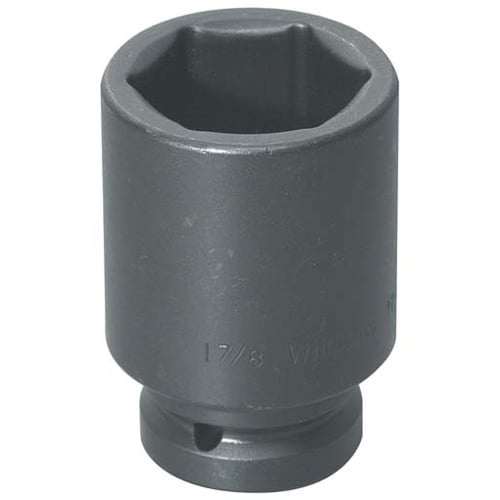Posted by Hand Tool Experts on 7/25/2023 to
Hand Tools
Hand Tools

Socket Usage Safety Tips
Sockets are a standard tool used in automotive repair, construction, and other industries. They allow for the easy removal and installation of nuts and bolts, making many tasks much more manageable. However, like any tool, sockets can be dangerous if not used correctly.
This blog post will discuss some essential safety tips when using sockets.
- Choose the Right Socket: Always choose the correct socket for the job. Using the wrong size socket can cause damage to the socket and the nut or bolt being worked on. A socket that is too small can slip and round off the corners of the bolt head, while one that is too large can damage the bolt or cause it to break.
- Inspect Sockets: Before using a socket, inspect it for cracks, chips, or other signs of damage. Damaged sockets should not be used, as they can break under pressure and cause injury.
- Use Socket Extensions Correctly: Socket extensions reach bolts in tight or hard-to-reach areas. When using an extension, ensure it is securely attached to the socket and the ratchet handle. An improperly secured extension can cause the socket to come loose, which can be dangerous.
- Secure Sockets: Always ensure the socket is securely attached to the ratchet handle. A loose socket can slip and cause injury, damage to the bolt, or damage to the socket.
- Use the Ratchet Correctly: When using a ratchet handle, ensure it appropriately engages with the socket. A ratchet handle that is not engaged can slip and cause injury.
- Keep workspace Clean: Keep the workspace clean and free from clutter to prevent tripping hazards. Make sure that there is adequate lighting to see what you are working on.
- Avoid Overexertion: Avoid overexerting yourself when using a socket. Use proper technique and avoid excessive force, as this can cause injury or damage to the socket and bolt.
- Wear Safety Gear: Always wear appropriate safety gear when using sockets. Safety Gear may include safety glasses, gloves, and earplugs to protect against flying debris, noise, and vibration.
- Don’t Use Sockets for Non-Intended Purposes: Never use sockets for purposes other than what they were designed for. For example, using a socket as a hammer can cause it to crack or break, which can be dangerous.
- Avoid Heat: Avoid using sockets on hot bolts or in hot environments, as this can cause the socket to expand and become stuck on the bolt. Allow the bolt to cool down before removing it with a socket.
In conclusion, sockets are valuable tools that can make many jobs easier, but they must be used safely and correctly to prevent accidents and injuries. By following these safety tips, you can ensure that you are using sockets safely and accurately. Remember to prioritize safety when using any tool or equipment and seek assistance from a more experienced colleague or a supervisor if you need help using a socket correctly.